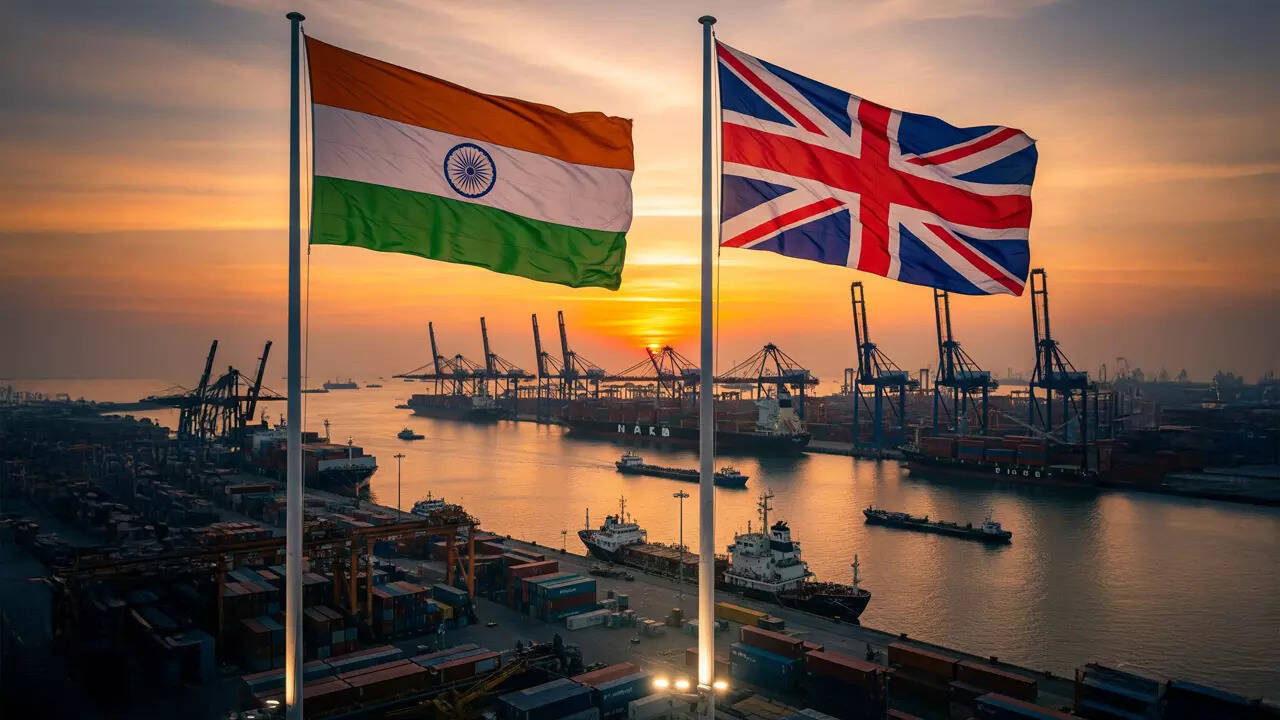The India-UK Comprehensive Economic and Trade Agreement (CETA) is set to significantly boost India’s seafood exports by eliminating UK import tariffs, potentially increasing exports by 70%. This levels the playing field with countries already enjoying UK duty benefits. The agreement also extends to other sectors like textiles, leather, and IT, benefiting Indian MSMEs and job creation.
Beyond Bangers and Mash: A Seafood Revolution Brews Between India and the UK
Forget lukewarm tea and soggy fish and chips – a tidal wave of change is about to hit the British culinary scene, and it smells distinctly of the Indian Ocean. A new trade agreement, echoing the benefits of agreements like the Comprehensive Economic and Trade Agreement (CETA), is poised to unleash a torrent of Indian seafood onto UK plates, promising a juicy boost for Indian exporters and a wider array of flavors for British consumers.
The buzz surrounds the India-UK Free Trade Agreement (FTA), which has unlocked duty-free access for Indian seafood exporters to the UK market. This isn’t just about a few extra prawns on the Sainsbury’s shelf; industry insiders are predicting a staggering 70% growth in seafood exports from India to the UK. Think more readily available, competitively priced, and diverse seafood choices, from succulent tiger prawns to flaky white fish, all making their way from Indian shores to British tables.
This is a major win for India’s seafood industry. For years, Indian exporters have faced tariff barriers that made it difficult to compete with other nations. Now, with these barriers removed, they can directly target the UK market with increased confidence. This duty-free access translates directly into increased profitability for Indian fishermen, processors, and exporters, strengthening the entire seafood value chain.
The UK’s Appetite for Indian Seafood
Why the optimism? The UK boasts a substantial and increasingly diverse consumer base with a growing appetite for seafood. While traditional fish and chips will likely remain a staple, there’s a rising demand for healthier and more exotic seafood options. Indian seafood, known for its quality and variety, is perfectly positioned to fill this niche.
Consider the impact on restaurants. Imagine Indian restaurants in the UK, already celebrated for their curries and biryanis, having easier access to premium Indian seafood. This unlocks new possibilities for menu innovation, allowing chefs to create authentic and exciting dishes that showcase the best of Indian coastal cuisine.
Furthermore, the FTA could indirectly impact the availability of other seafood products in the UK. By increasing the supply of Indian seafood, it might create a more competitive market, potentially driving down prices and increasing overall availability for consumers.
Navigating the Waters: Challenges and Opportunities
While the future looks bright, navigating the choppy waters of international trade is never without its challenges. Indian exporters need to ensure they meet the stringent quality and safety standards demanded by the UK market. This includes adherence to rigorous hygiene regulations, traceability protocols, and sustainable fishing practices.
Investing in modern processing facilities and implementing robust quality control measures will be crucial for maintaining the integrity of the seafood supply chain and building trust with UK consumers.
For the UK, this influx of Indian seafood presents an opportunity to diversify its seafood supply and offer consumers a wider range of choices. However, it’s also important to consider the potential impact on local fishing industries. A balanced approach is needed, one that supports both domestic fisheries and the growing import of Indian seafood.
Beyond the Plate: A Boost for Indo-UK Relations
The India-UK FTA is more than just a trade agreement; it’s a symbol of deepening economic ties between two nations. This increased trade in seafood represents a tangible example of how these partnerships can benefit both countries, fostering economic growth and creating new opportunities for businesses and consumers alike.
This landmark deal will likely encourage further collaboration between Indian and British companies in the seafood sector, potentially leading to joint ventures, technology transfers, and knowledge sharing. Such partnerships can further enhance the efficiency and sustainability of the seafood industry in both countries. It’s a win-win scenario that promises to reshape the seafood landscape for years to come. Explore our other articles on [India-UK trade relations](internal_link_example).
The Bottom Line: A Sea Change for Seafood
The India-UK FTA is poised to trigger a significant shift in the seafood market, benefiting both Indian exporters and UK consumers. This agreement opens up new avenues for growth, innovation, and collaboration, paving the way for a more vibrant and diverse seafood scene. It demonstrates the power of trade agreements to unlock economic potential and foster stronger international relationships. This duty-free access for Indian seafood could reshape the UK’s culinary landscape.







